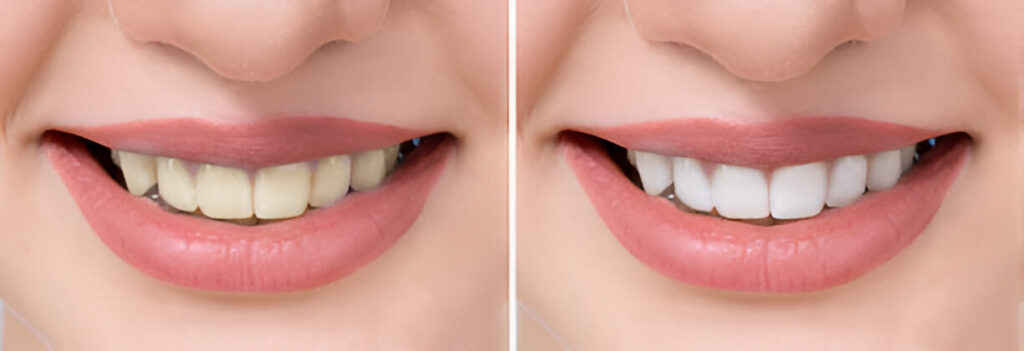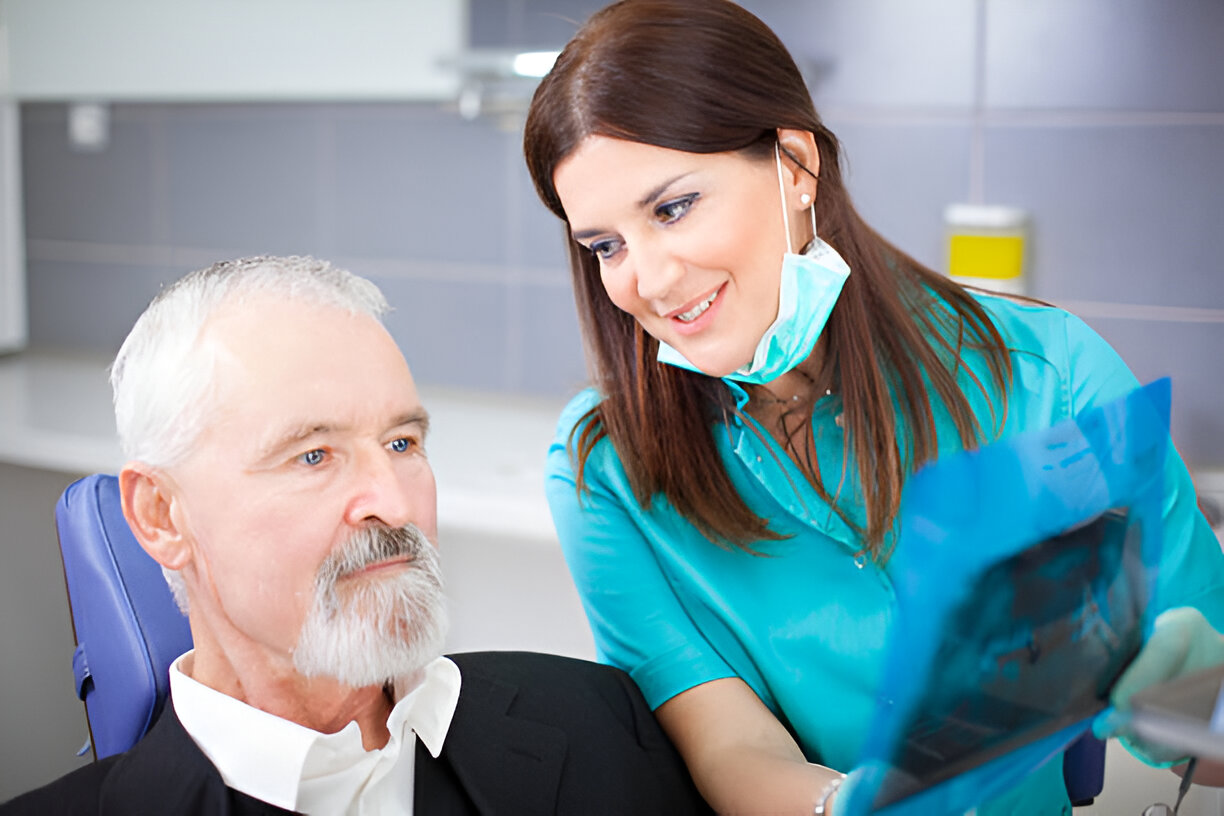A bright smile makes a great first impression. Many people use whitening strips to remove stains and improve the appearance of their teeth. However, one common question arises: Should you brush your teeth before using whitening strips?
Brushing is an important part of oral hygiene, but does it affect how Teeth whitening strips work? Let’s explore the benefits, risks, and best practices to ensure you get the best results while keeping your teeth and gums healthy.
What Are Whitening Strips?
Whitening strips are thin, flexible strips coated with a whitening gel. This gel usually contains hydrogen peroxide or carbamide peroxide—both known for breaking down stains on the enamel. For expert dental care and advice on teeth whitening, visit NHS Dentist Aberdeen at Holburn Dental & Implant Centre.
The strips stick to the surface of your teeth and gradually whiten them over time. Many people use them as a convenient and affordable way to enhance their smile.
Whitening strips can effectively remove stains caused by:
- Coffee and tea
- Red wine
- Smoking
- Certain foods, such as berries and curry
- Poor oral hygiene
These strips are widely available and easy to use. However, following the correct procedure ensures safe and effective whitening without damaging your teeth or gums.
Can I Eat Chicken Nuggets After Teeth Whitening?
Should You Brush Before Using Whitening Strips?
Brushing before applying whitening strips has both advantages and disadvantages. Let’s break it down.
Benefits of Brushing Before Applying Whitening Strips
Brushing removes plaque, food particles, and bacteria. A clean surface allows the whitening gel to make full contact with your enamel, improving effectiveness.
If plaque or tartar is on your teeth, the whitening agent may not work as effectively. Brushing first removes these barriers.
Plaque buildup can lead to uneven whitening results. A clean surface ensures that all areas of your teeth receive the same amount of whitening.
Brushing before applying strips keeps your mouth clean and fresh. It helps maintain good dental health.
Risks of Brushing Before Applying Whitening Strips
Brushing can make the enamel slightly more porous. When you apply whitening strips right after brushing, the peroxide may penetrate deeper, leading to temporary sensitivity.
Brushing too hard can cause gum irritation. If the whitening gel touches irritated gums, it can cause discomfort or a slight burning sensation.
Brushing, especially with abrasive toothpaste, may slightly weaken the enamel. If you apply whitening strips immediately after brushing, your teeth might be more sensitive.
How Long Does Teeth Whitening Last?
Should You Brush After Using Whitening Strips?
Many people also wonder if they should brush after using whitening strips. The answer depends on how soon after you brush and the products you use.
Benefits of Brushing After Using Whitening Strips
Some whitening gel may stay on your teeth after removing the strips. Brushing helps clean off any residue.
Brushing ensures that your teeth remain free from plaque, bacteria, and food particles.
After using whitening strips, your enamel is more porous for a short time. Brushing prevents new stains from forming.
Risks of Brushing After Using Whitening Strips
Whitening strips can temporarily weaken enamel. Brushing immediately after can cause irritation or discomfort.
If your gums are sensitive after using whitening strips, brushing too soon may make them feel sore.
How Teeth Whitening Strips Can Help You Smile Brighter
Best Practices for Using Whitening Strips
To get the best results while avoiding discomfort, follow these simple guidelines:
Before Using Whitening Strips
Wait before brushing. If you want to brush before applying whitening strips, do it at least 30 minutes before. This gives your enamel time to settle.
Use a soft-bristled toothbrush. A soft toothbrush is gentle on enamel and gums.
Choose a non-abrasive toothpaste. Avoid harsh toothpaste that could weaken your enamel.
Brush gently. Use light, circular motions instead of hard scrubbing to protect your teeth and gums.
After Using Whitening Strips
Rinse your mouth with water. After removing whitening strips, rinse well to wash away leftover gel.
Wait at least 30 minutes before brushing. This gives your enamel time to re-harden and reduces the risk of sensitivity.
Avoid staining foods. For the next one to two hours, avoid coffee, tea, red wine, and dark-colored foods.
Common Myths About Whitening Strips
There are many misconceptions about whitening strips. Let’s clear up some of the most common myths.
1. Whitening Strips Damage Enamel
Whitening strips are safe when used correctly. The peroxide-based gel breaks down stains but does not harm the enamel. Overuse, however, can weaken teeth.
2. The Longer You Leave Them On, The Better
Leaving whitening strips on longer than recommended does not make teeth whiter. Instead, it increases sensitivity and can cause gum irritation.
3. Whitening Strips Work on All Teeth
Whitening strips only work on natural teeth. They do not whiten crowns, veneers, or fillings.
4. You Can Use Whitening Strips Daily
Most brands recommend using whitening strips once a day for 10 to 14 days. Overuse can lead to sensitivity and damage.
Other Teeth Whitening Options
If whitening strips do not give you the results you want, there are other ways to whiten your teeth.
1. Whitening Toothpaste
Whitening toothpaste contains mild abrasives that remove surface stains. It is a good option for maintaining results after using whitening strips.
2. Whitening Mouthwash
Whitening mouthwashes help remove stains over time. They are useful for keeping teeth bright after using whitening strips.
3. Professional Whitening Treatments
For faster and more dramatic results, professional whitening at a dental clinic is the best option. These treatments use stronger whitening agents for deep stain removal.
How to Maintain White Teeth After Using Whitening Strips
To make your whitening results last longer, follow these tips:
- Brush twice a day. Keeping your teeth clean prevents stains from building up.
- Floss daily. Flossing removes food and plaque between your teeth, preventing yellowing.
- Drink water after eating. Water helps wash away food and drinks that can stain teeth.
- Use a straw. Drinking coffee, tea, or soda through a straw reduces contact with your teeth.
- Touch up when needed. Use whitening strips occasionally to maintain brightness.
Final Thoughts
Yes, you can brush before using whitening strips, but with caution. It helps create a clean surface for better results. However, avoid brushing right before applying the strips. If you experience sensitivity, wait at least 30 minutes before brushing again.
For the best whitening experience, follow the right steps, maintain good oral hygiene, and take care of your teeth. A bright smile starts with healthy habits.
Achieve a Brighter Smile with Holburn Dental & Implant Centre
If you’re looking for a safe and effective way to whiten your teeth, professional guidance makes all the difference. At Holburn Dental & Implant Centre, we offer expert advice and professional teeth whitening treatments that deliver long-lasting results. Whether you need routine dental care or advanced cosmetic treatments, our team is here to help.
FAQs About Brushing and Whitening Strips
Can I use mouthwash before applying whitening strips?
It is best to avoid mouthwash before applying whitening strips. Some mouthwashes contain alcohol or strong ingredients that may irritate your gums. If you must use mouthwash, wait at least 30 minutes before using the strips.
How often should I use whitening strips?
Most whitening strips are designed for daily use over 10 to 14 days. However, overuse can lead to sensitivity. Always follow the instructions on the packaging and take breaks between whitening treatments if your teeth feel sensitive.
Can I drink water while wearing whitening strips?
It is not recommended to drink water while wearing whitening strips. The strips need to stay in direct contact with your teeth for the gel to work properly. Drinking water may cause them to loosen or reduce their effectiveness.
Do whitening strips work on crooked teeth?
Whitening strips can still work on crooked teeth, but the coverage may be uneven. If your teeth are very misaligned, consider whitening trays or professional treatments to ensure even whitening results.
Can I brush my teeth with whitening toothpaste after using strips?
Yes, but wait at least 30 minutes before brushing. Whitening toothpaste can be slightly abrasive, and brushing immediately after using whitening strips may cause sensitivity or enamel erosion. Using a non-abrasive toothpaste is the best option.
visit Holburn Dental and Implant Centre for whitening treatment in Aberdeen


